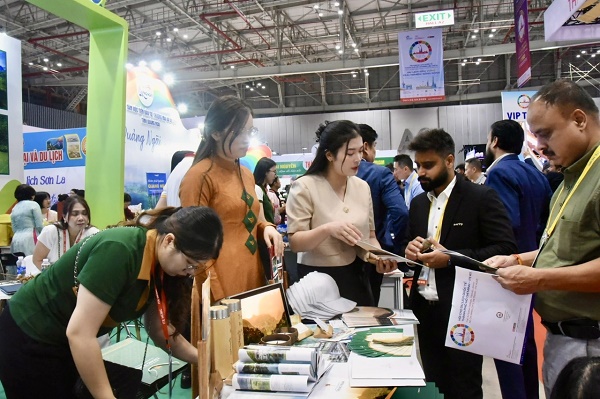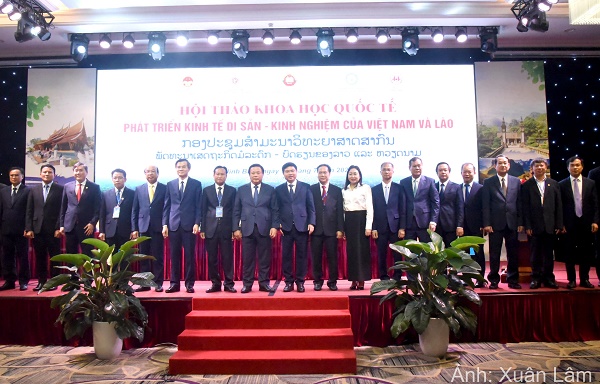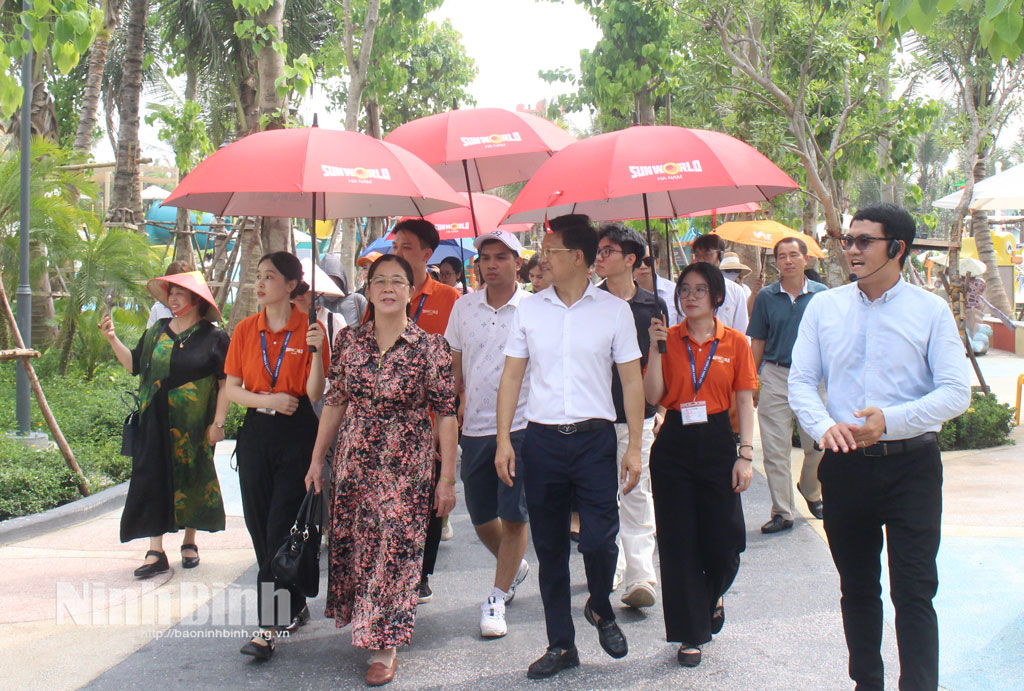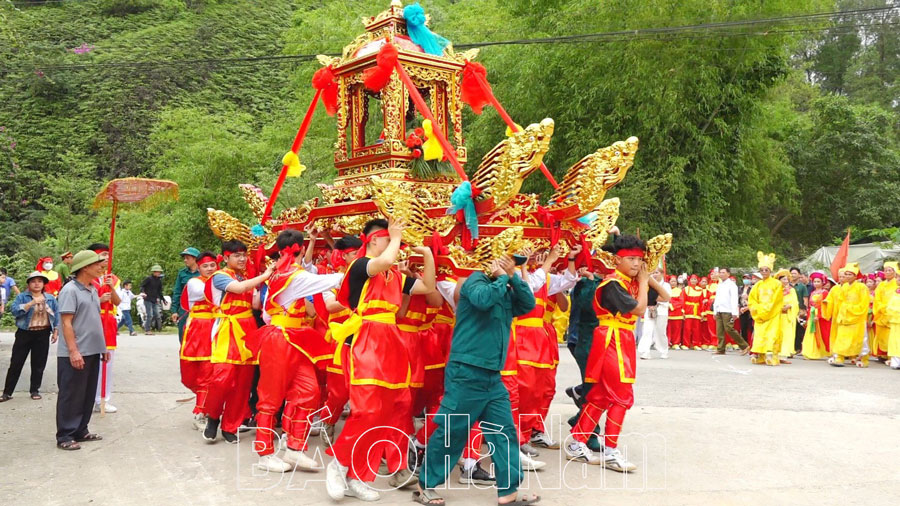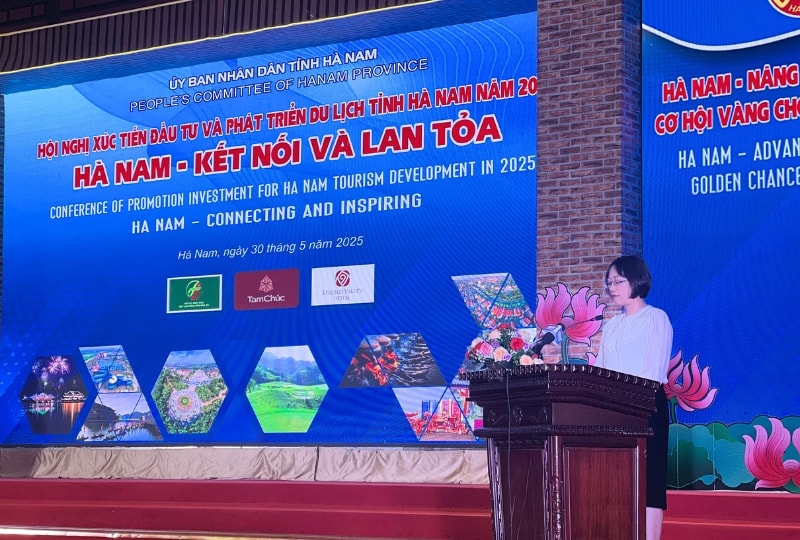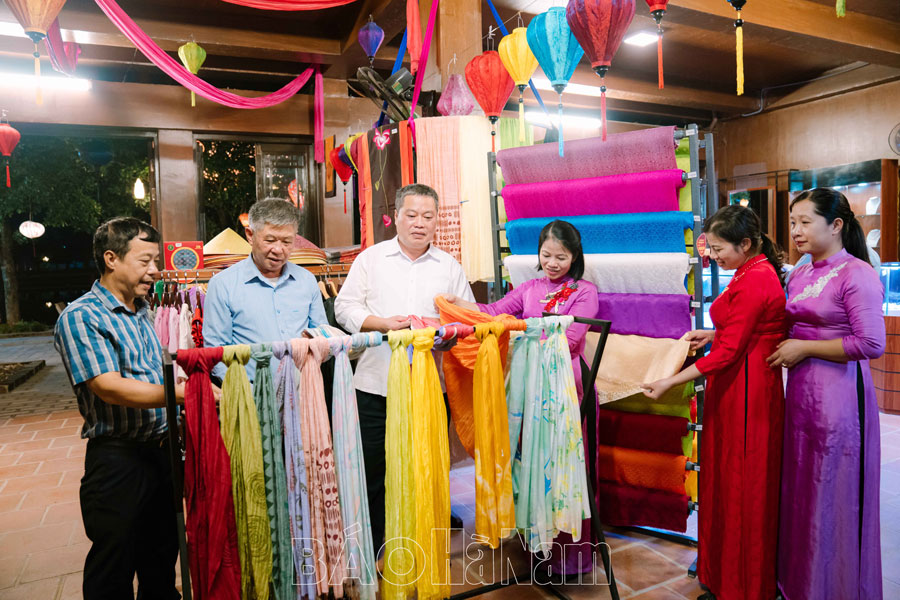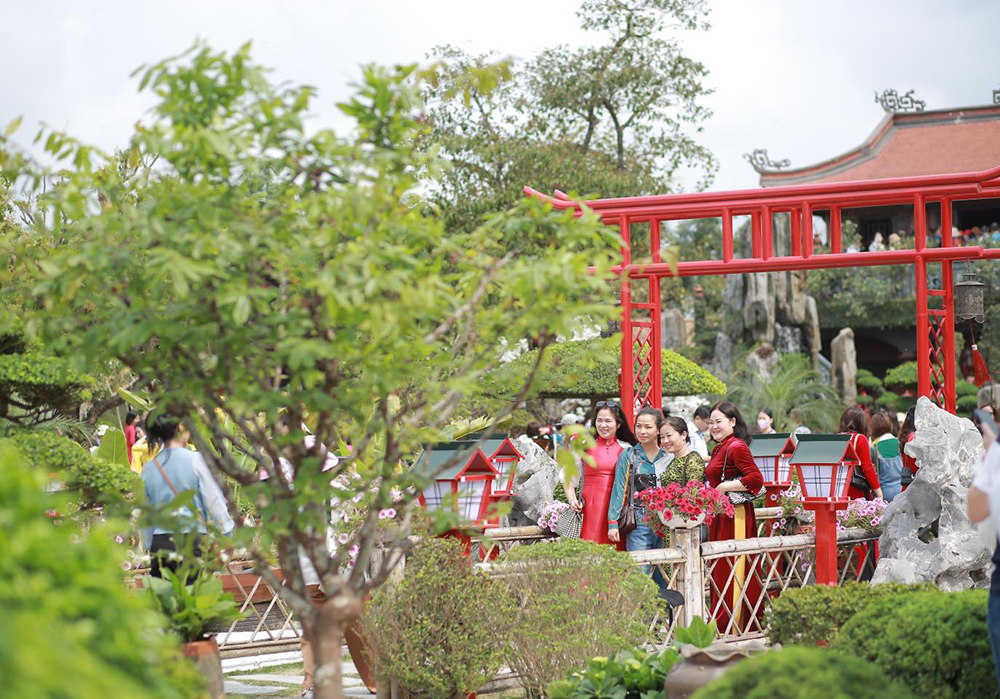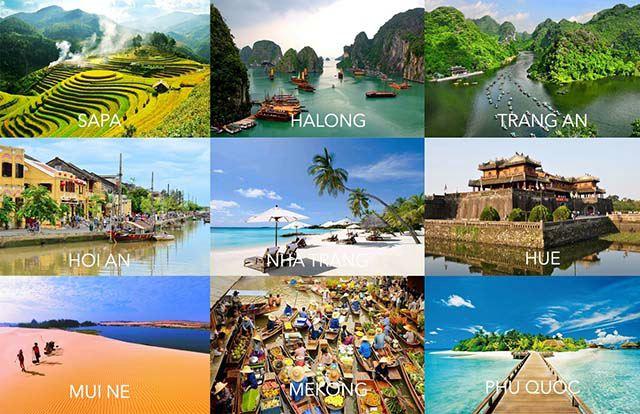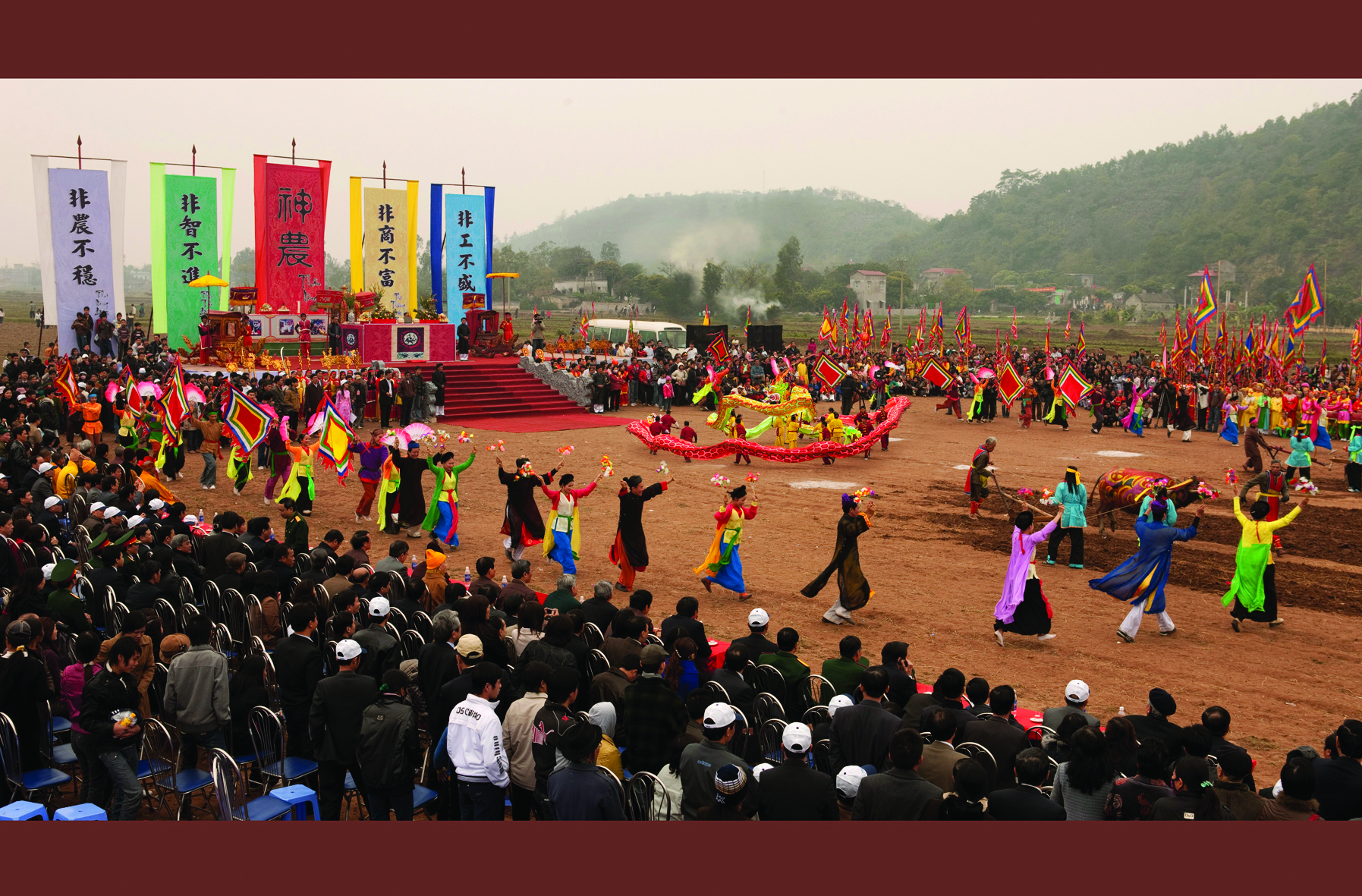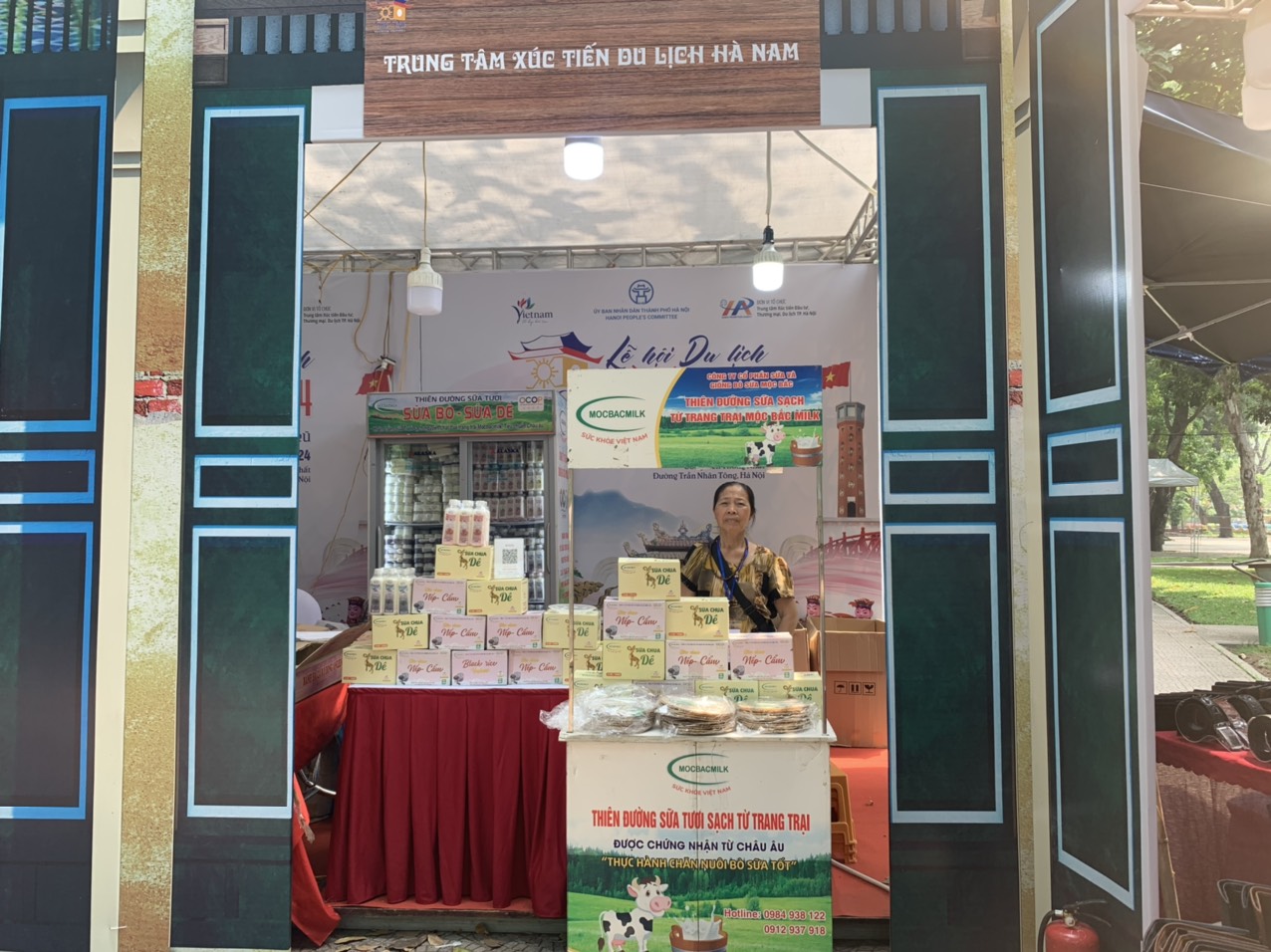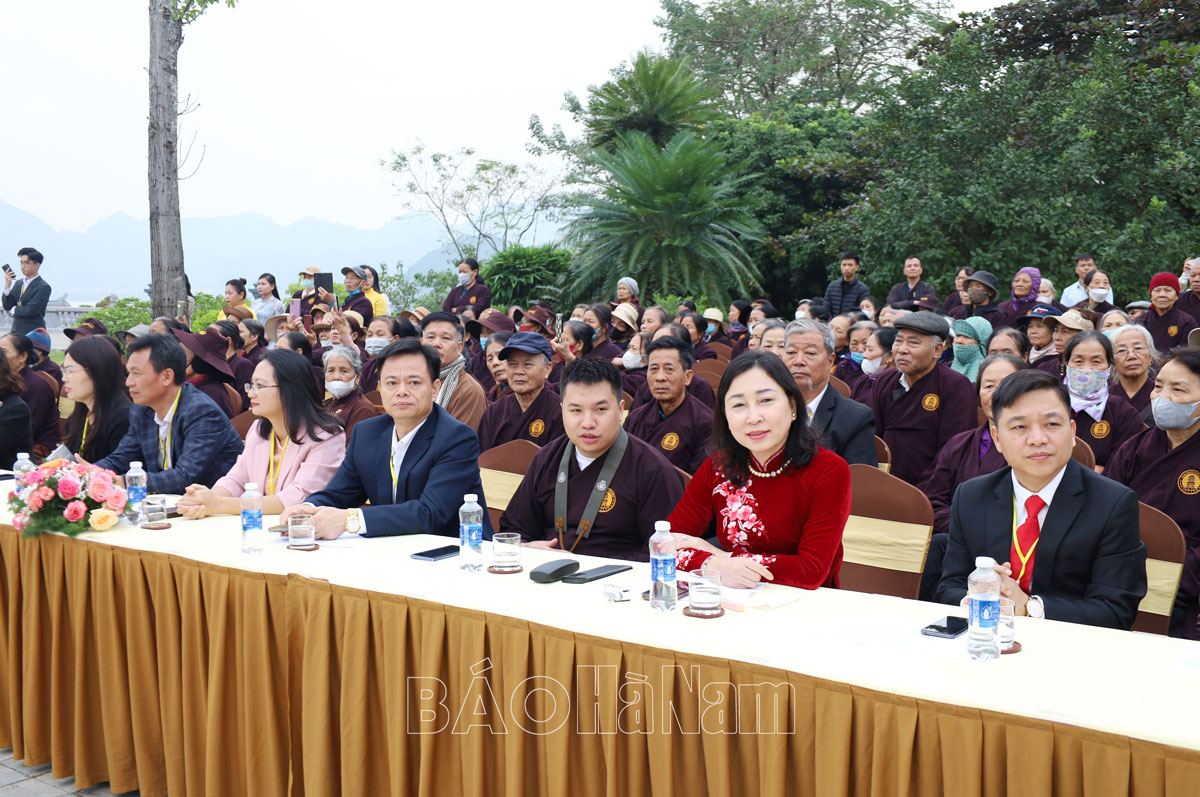
Article 1 . Approve the Tourism System Planning for the period 2021 - 2030, with a vision to 2045, with the following contents:
I. SCOPE OF PLANNING
1. Scope of planning: The entire territory on the mainland, islands, archipelagos and sea areas under the sovereignty, sovereign rights and national jurisdiction of Vietnam.
2. Objects of planning:
Planning objects include components of the national tourism system; Specifically: Tourism products; tourism market; system of technical facilities of the tourism industry (system of accommodation facilities, means of transporting tourists, entertainment and dining facilities...); tourism human resources and tourism training facility system; organize and manage tourism activities and link tourism development; spatial organization of tourism territory (tourist regions, key areas for tourism development, national tourist routes, national tourist areas and potential locations for development into national tourist areas).
II. OPINION
1. Develop tourism to truly become a key economic sector, in a professional, modern and in-depth direction; accounting for an increasing proportion in the GDP structure, creating motivation to promote other industries and fields; making an important contribution to forming a modern economic structure.
2. Develop international tourism at the same time as enhancing the effective exploitation of domestic tourism; effectively promote the driving role of businesses and residential communities; Strengthen the effectiveness of industry linkages between tourism and other industries and fields, as well as regional, local and international links.
3. Develop tourism on the basis of effectively exploiting national potential and advantages, promoting human factors, taking Vietnamese cultural values as the foundation; Associate tourism development with preserving and promoting heritage values and national cultural identity.
4. Developing tourism associated with digital transformation, taking advantage of the achievements of the Fourth Industrial Revolution; improving quality and competitiveness.
5. Developing sustainable and creative tourism, on the basis of green growth, maximizing tourism's contribution to the United Nations' sustainable development goals; protect the environment, respond flexibly and effectively to risks and climate change; ensure security, national defense, social order and safety.
III. OBJECTIVES
1. General goal
a) By 2025, Vietnam will become an attractive destination with high tourism development capacity in the world.
b) By 2030, tourism will truly become a key economic sector, developing towards green growth; become a destination with the world's leading development capacity.
2. Specific goals
a) Period up to 2030
- Regarding industry development targets:
+ Tourists: By 2025, we strive to welcome 25 - 28 million international visitors; 130 million domestic visitors, maintaining a domestic tourist growth rate of 8 - 9%/year. By 2030, welcoming 35 million international visitors, growth rate from 13 - 15%/year; welcoming 160 million domestic visitors, domestic tourist growth rate of 4 - 5%/year;
+ Tourism's contribution to GDP: By 2025, it will directly contribute 8 - 9% to GDP; By 2030, direct contribution will be from 13 - 14% to GDP;
+ Demand for accommodation rooms: About 1.3 million rooms in 2025; about 2 million rooms by 2025;
+ Job creation: By 2025, about 6.3 million jobs will be created, of which about 2.1 million will be direct jobs; by 2030, about 10.5 million jobs will be created, of which about 3.5 million will be direct jobs.
- Regarding culture and society: Tourism contributes to preserving and promoting cultural values, creating livelihoods for the community, contributing to the successful implementation of national target programs; improving people's knowledge and spiritual life.
- About the environment: Sustainable tourism development associated with environmental protection; effectively respond to climate change. By 2030, 100% of tourist areas and destinations; Tourist accommodation establishments and other coastal service businesses do not use single-use plastic products and non-biodegradable plastic bags.
- Regarding security and defense: Contribute to affirming and protecting national territorial sovereignty, maintaining security, order and social safety.
b) Vision to 2045
- Affirming the driving role of the economy; Outstanding global destination, among the top tourism developing countries in the Asia-Pacific region.
- Regarding main targets: Strive to welcome 70 million international visitors; Total revenue from tourists reached about 7,300 trillion VND; contributing 17 - 18% of GDP.
IV. ORIENTED DEVELOPMENT
1. Market development orientation
a) Domestic market
- Period 2021 - 2025: Recover and maintain the growth momentum of the domestic tourist market.
- Period 2026 - 2030: Promote the exploitation of high-paying, long-stay market segments, new markets in golf tourism, sports tourism, and adventure tourism.
b) International market
- Period 2021 - 2025: Restore traditional markets, combined with attracting emerging markets: India, Middle Eastern countries.
- Period 2026-2030: Maintain and expand the scale of traditional markets: Northeast Asia, Southeast Asia, Europe, North America, Russia and Eastern Europe, Oceania; diversify markets, shift towards increasing the market share of customers with high spending ability.
2. Product development orientation
a) Development of main product lines
- Optimal exploitation of sea and island tourism resources to develop tourism products capable of competing with regional countries in terms of beach resorts, marine ecology and cruise tourism. Develop high-end beach resort centers with strong brands in the international market.
- Promoting regional and regional cultural values as a foundation for building tourism products associated with heritage, festivals, sightseeing and learning about lifestyle and cuisine; connecting Vietnamese heritage with countries in the region and the world; Effectively linking tourism with cultural industry.
- Develop ecotourism products based on the advantages of natural resources, especially in world biosphere reserves, national parks, nature reserves and marine protected areas; attach importance to the development of mangrove eco-tourism, garden ecology, cave, river and lake ecology.
- Develop tourism products associated with central cities: Hanoi Capital, Ho Chi Minh City, Da Nang, Hai Phong, Can Tho; special cities, such as: Heritage City of Hoi An (Quang Nam), Hue (Thua Thien Hue); key cities for tourism development, such as: Sa Pa (Lao Cai), Ha Long (Quang Ninh), Nha Trang (Khanh Hoa), Da Lat (Lam Dong), Phan Thiet (Binh Thuan), Phu Quoc (Kien Giang); focus on linking tourism with cultural industry and developing the night-time economy.
b) Develop new types of tourism in the direction of diversifying products in accordance with new market trends: tourism combining medical treatment, health care and aesthetics; agricultural and rural tourism; sports tourism, adventure sports; conference, seminar, and event (MICE) tourism; educational tourism; yacht travel; industrial tourism;
c) Develop specific and outstanding tourism products by region; Forming typical regional tourism products and creating a regional tourism brand based on strengthening regional links
3. Orientation for organizing tourism space
Vietnam's tourism space development planning includes: 06 regions, 03 growth poles, 08 driving areas, 05 main tourism corridors, 11 tourism centers; Form a system of national tourist areas and potential locations to develop into national tourist areas.
a) Development orientation and linkage of tourism development according to socio-economic regions identified in the National Master Plan
- Northern Midlands and Mountains:
+ Develop tourism products on the basis of exploiting strengths from natural landscapes, ecosystems, and unique and diverse cultural identities of ethnic communities. Prioritize the development of tourism products with unique characteristics of the region: tourism to the source; Travel to learn about culture and history, travel to experience the life of ethnic minority communities; nature exploration tourism, adventure sports; resort tourism and mountain and lake ecology;
+ Strengthen links to exploit tourism resources and take advantage of infrastructure in clusters: Son La - Yen Bai; Lai Chau - Lao Cai - Ha Giang; Lao Cai - Phu Tho - Yen Bai; Cao Bang - Lang Son; Thai Nguyen - Tuyen Quang. Linking with the Red River Delta, with China and Lao PDR along the Northern East - West tourist corridor (formed on the basis of the Dien Bien - Son La - Hoa Binh - Hanoi economic corridor).
- Red River Delta region:
+ Develop tourism products on the basis of exploiting strengths from the world heritage system, traditional cultural values, natural landscapes of sea and islands, diverse ecosystems, and urban areas. Prioritize the development of tourism products with unique characteristics of the region: visit and experience the world heritage site of Ha Long Bay (Quang Ninh), Trang An Scenic Landscape Complex (Ninh Binh), Thang Long Imperial Citadel (Hanoi). Noi); travel to learn about culture and folk beliefs; Craft village and festival tourism; Urban tourism associated with cultural industry and night time economy;
+ Strengthening linkages in exploiting tourism resources and taking advantage of infrastructure in clusters: Quang Ninh - Hai Phong; Thai Binh - Nam Dinh. Linking with the North Central and Central Coast regions, with China along the North - South Eastern tourism corridor, the Gulf of Tonkin economic belt (Quang Ninh - Hai Phong - Thai Binh - Nam Dinh - Ninh Binh); with the Northern Midlands and Mountains along the North East - West tourism corridor (formed on the basis of the Dien Bien - Son La - Hoa Binh - Hanoi economic corridor).
- North Central and Central Coast regions:
+ Develop tourism products on the basis of exploiting strengths from island tourism resources, natural landscapes, diverse ecosystems, world heritage systems, and historical and cultural relics. Prioritize the development of tourism products with unique characteristics of the region: "Central Heritage Road" tourism; sea and island resort tourism; Travel to visit and learn about historical and revolutionary relics; cave ecotourism; travel to learn about national culture;
+ Strengthen links to exploit tourism resources and take advantage of infrastructure in clusters: Thanh Hoa - Nghe An - Ha Tinh; Quang Binh - Quang Tri; Thua Thien Hue - Da Nang - Quang Nam; Quang Ngai - Phu Yen - Binh Dinh; Khanh Hoa - Ninh Thuan - Binh Thuan. Linking with the Red River Delta and the Southeast region along the Eastern North-South tourist corridor; with the Central Highlands region along the East - West tourist corridor (Central region).
- Highland:
+ Develop tourism products based on exploiting strengths from natural landscapes, diverse ecosystems and unique cultural identities. Prioritize the development of products with unique characteristics of the region: tourism to explore and experience the nature of the highlands, the gong cultural space of the Central Highlands; "Central Highlands Green Road" tourism; mountain resort tourism, ecotourism;
+ Strengthen links to exploit tourism resources and take advantage of infrastructure in clusters: Gia Lai - Kon Tum; Lam Dong; Dak Lak - Dak Nong. Linking with the Southeast region along the Western North-South tourist corridor; with the North Central and Central Coast regions, and with Lao PDR along the East-West tourism corridor (Central region).
- Southeast region:
+ Develop tourism products on the basis of exploiting strengths from the system of historical and cultural relics, revolutionary relics, urban areas, and island tourism resources. Prioritize the development of products with regional characteristics: conference, seminar, and event tourism (MICE), urban tourism associated with cultural industry and night economy, sea and island resort tourism;
+ Strengthen links to exploit tourism resources and take advantage of infrastructure in clusters: Dong Nai - Binh Duong; Binh Phuoc - Tay Ninh; BA Ria Vung Tau. Linking with the Mekong Delta, the North Central region and the Central Coast along the North-South East and West tourist corridors; with Cambodia along the southern East-West tourism corridor.
- Mekong Delta region:
+ Develop tourism products on the basis of exploiting strengths from river ecosystems, natural landscapes, sea and island tourism resources, historical and cultural relics and diverse traditional cultural values. form. Prioritize the development of products with unique characteristics of the region: rural river tourism; learn about cultural heritage; sea and island resort tourism, entertainment;
+ Strengthen links to exploit tourism resources and take advantage of infrastructure in clusters: An Giang - Dong Thap - Long An; Tien Giang - Ben Tre - Tra Vinh - Soc Trang; Kien Giang - Ca Mau. Linking with the Southeast region along the East and West North - South tourist corridors, with Cambodia and Thailand along the southern coastal corridor (Ha Tien - Rach Gia - Ca Mau).
b) Form three main tourism growth poles associated with national growth poles, including:
- Hanoi capital: National growth pole in the Northern region, acting as a gateway and tourist distribution center for provinces in the Red River Delta and the Northern Midlands and Mountains.
- Ho Chi Minh City: National growth pole in the Southern region, acting as the gateway to attract the largest international visitors in Vietnam, spreading and leading tourism throughout the Southeast and Delta regions Mekong River, Central Highlands and Southern Coast provinces of the North Central and Central Coast regions.
- Da Nang City: National growth pole in the Central region, acting as a gateway to attract visitors by air, sea and road (East - West economic corridor) and a driving force to promote develop tourism in the North Central and Central Coast regions and the Central Highlands.
b) Build and form 08 driving areas for tourism development to focus resources, maximize investment efficiency, spread and promote the benefits and values of tourism
- By 2030, focus on forming 06 driving areas:
+ Driving force area for tourism development Hanoi - Hai Phong - Quang Ninh - Ninh Binh: Promoting tourism development in the Red River Delta, more broadly the entire Northern region, combining diversity and complementarity each other on cultural and historical tourism products with marine tourism and world heritage sites;
+ The driving force area for tourism development Thanh Hoa - Nghe An - Ha Tinh: Create support in the direction of combining a variety of tourism products associated with ecology, world heritage, historical culture, and beliefs with marine tourism, origin tourism, community tourism associated with ethnic minorities in mountainous areas;
+ Motivation area for tourism development of Quang Binh - Quang Tri - Thua Thien Hue - Da Nang - Quang Nam: Promoting tourism development in the North Central and Central Coast regions; connecting domestic and international world heritage sites, linking cultural tourism products with urban tourism and beach resorts;
+ Driving force area for tourism development Khanh Hoa - Lam Dong - Ninh Thuan - Binh Thuan: Promote tourism development on the basis of strengthening the connection between the North Central and Central Coast regions with the Central Highlands; diversifying products on the basis of connecting mountain resort tourism with sea resorts, delta culture with the gong cultural space of the Central Highlands;
+ Motivation area for tourism development Ho Chi Minh City - Ba Ria - Vung Tau: Promote tourism development in the entire Southeast region, linking tourism development with the Southern economic corridor;
+ Motivation area for tourism development in Can Tho - Kien Giang - Ca Mau: Promote tourism development in the entire Mekong Delta region, linking tourism development with the coastal economic corridor of the economic corridor. southern economy.
- In the period after 2030, two dynamic areas will be formed:
+ Lao Cai - Ha Giang tourism development driving force area: Promoting tourism development in the entire Northern Midlands and Mountains region connecting with the tourist market in Yunnan (China) and linking development tourism development along the Kunming - Hanoi - Hai Phong economic corridor;
+ Motivation area for tourism development Hoa Binh - Son La - Dien Bien: Promote tourism development for the Northwest sub-region of the Northern Midlands and Mountains, linking tourism development along the corridor East-West economy along National Highway 6.
c) Develop 05 tourism corridors connecting the driving force areas for tourism development, tourism centers, and national tourist areas; Strengthen links with countries in the region, including:
- Eastern North - South tourist corridor: Formed on the basis of the North - South economic corridor, including the Eastern North - South traffic axis and coastal road system;
- Western North - South tourist corridor: Formed on the basis of Ho Chi Minh road and the Western North - South expressway;
- Northern East - West tourism corridor: Formed on the basis of the Lao Cai - Hanoi - Hai Phong - Quang Ninh economic corridor, connecting with China (Yunnan) through Lao Cai international border gate;
- East - West tourism corridor (Central region): Formed on the basis of the Lao Bao - Dong Ha - Da Nang economic corridor, connecting with Lao PDR and the Greater Mekong Subregion (GMS) countries through Lao Bao international border gate and Nam Giang (Quang Nam) - Da Nang economic corridor, connecting with Lao PDR through Nam Giang international border gate;
- South East - West tourism corridor: Formed on the basis of the Moc Bai - Ho Chi Minh City - Bien Hoa - Vung Tau economic corridor, connecting with Cambodia and Mekong Subregion (GMS) countries. through Moc Bai international border gate;
In addition, promote the development of other intra-regional and inter-regional tourism corridors on the basis of economic corridors identified in the National Master Plan for the period 2021 - 2030, with a vision to 2050.
d) Develop 11 tourism centers associated with urban areas with outstanding potential and advantages, including: Ha Long (Quang Ninh), Ninh Binh (Ninh Binh), Hue (Thua Thien - Hue), Da Nang, Hoi An (Quang Nam), Quy Nhon (Binh Dinh), Nha Trang (Khanh Hoa), Da Lat (Lam Dong), Vung Tau (Ba Ria - Vung Tau), Can Tho, Phu Quoc (Kien Giang) to prioritize Developing tourism products and services associated with night-time economic development orientations (according to the Night Economy Development Project in Vietnam approved in Decision No. 1129/QD-TTg dated July 27 2020 by the Prime Minister).
e) Develop a system of national tourist areas
- Prioritize synchronous investment and improve the quality of national tourist areas that have been recognized by competent authorities.
- Planning and investing in infrastructure, attracting investment in facilities to promote potential locations to develop into national tourist areas.
(List of potential locations for development into national tourist areas in Appendix I).
4. Investment orientation for tourism development
a) Total investment needs, capital structure and investment phasing:
- Total investment need (expected): About 3,600 trillion VND, equivalent to 160 billion USD, according to current exchange rate; in which: capital from the state budget accounts for 3% - 5% (including ODA capital); Capital mobilized from the private sector accounts for 95% - 97% (including foreign direct investment).
- Investment phasing: Period 2021 - 2025: about 1,600 trillion VND and Period 2026-2030: about 2,000 trillion VND.
b) Priority investment areas
- Synchronously develop infrastructure systems and technical materials to serve tourism.
- Develop tourism products and build a national tourism brand.
- Developing tourism human resources; promote, promote and develop tourism resources and protect the environment.
c) Priority focus areas for investment
- Motivating areas for tourism development.
- Potential locations for development into national tourist areas.
Based on the orientation of organizing the territorial tourism space, the orientation of developing the market and tourism products, identify large and important projects, creating a driving force to promote tourism development nationwide and by region to prioritize investment and attract investment, depending on the needs and ability to balance and mobilize investment capital in each period.
5. Organize and develop tourism business system
Develop a system of branded and competitive tourism businesses, deeply participating in the regional and world tourism supply chain; diversify tourism business models in accordance with development trends and requirements.
6. Developing tourism human resources
a) Developing human resources to ensure sufficient quantity, quality requirements, balance in occupational structure and training level, meeting market needs and in accordance with product development orientations, space organization.
b) Developing human resources to meet the requirements of sustainable tourism development; Aims to build a high-quality, conscious and responsible workforce in the tourism industry in investing in restoration, conservation and maintenance of the integrity of natural resources, ensuring the environment. green, clear, beautiful.
c) Focus on improving vocational skills, administrative capacity and state management of tourism, qualified to participate in the global tourism supply chain.
IV. LIST OF INVESTMENT PRIORITIZED PROJECTS
1. Criteria for selecting priority projects for development investment
Priority investment projects of the tourism industry proposed in the planning are divided into project groups on: Digital transformation; investment in infrastructure development; training and fostering human resources; promote and develop brands; Preserving and promoting the value of natural resources, protecting the environment..., has important and urgent significance, creating a breakthrough for tourism development associated with the formation of driving force areas for tourism development, centers tourism centers, systems of national tourist areas and corridors connecting tourism development to promote and spread tourism and socio-economic development across regions and the whole country.
2. List of priority projects and investment phasing
a) The list of priority projects for investment in developing the tourism system identified in this planning is for orientation, serving as a basis for establishing each specific project during the planning implementation process; can be considered for adjustment and supplementation in the process of deciding on investment policies according to the provisions of law.
b) The phasing of project implementation is reviewed, approved, and adjusted appropriately by competent authorities depending on resource capacity. The objectives, scale, location, total investment, capital source, and land use needs of each specific project will be determined during the investment preparation process, deciding on project investment policies and appropriateness. consistent with national planning, regional planning and provincial planning.
(List of priority investment projects in Appendix II).
V. SOLUTIONS FOR IMPLEMENTING PLANNING
1. Mechanism and policy solutions
a) Complete legal documents related to tourism, especially in the fields of tourism planning, tourism resource investigation, national tourist areas, tourism development support... and tourism-related fields; Specific regulations create a legal corridor to manage tourism activities in accordance with the context and trends of green growth, digital transformation, night-time economic development, and cultural industry.
b) Complete mechanisms and policies to socialize investment to create an open and stable environment to attract investment in tourism development, especially community tourism in remote areas and islands; Prioritize investment resources in technical infrastructure and synchronous, quality facilities systems in tourist centers, national tourist areas and areas with potential to form destinations that meet the criteria international standards; Encourage socialization in the field of preservation, restoration, restoration of monuments and landscapes, conservation and restoration of festivals, folk cultural activities, and craft villages serving tourism development.
c) Propose the development and pilot application of specific policies and mechanisms to promote the development of the night economy in urban areas and tourist centers.
d) Improve entry and exit procedures to create favorable conditions for tourists; Expand the scope of visa exemption to target important markets.
2. Solutions to organize and manage tourism activities
a) Announce the Planning according to the provisions of law; Combine propaganda to raise awareness of the position, role and importance of tourism development to create high consensus among political organizations, businesses, investors and people when implementing implementation declaration.
b) Close and synchronous coordination in the planning implementation process between the central and local levels, ensuring that local plans comply with the development orientations of this Plan.
c) Strengthen inspection, supervision, and management of planning implementation; promote the role of people, businesses, and socio-political organizations in supervising the implementation of the Plan.
d) Prioritize resources to organize planning for potential locations for development into national tourist areas; Prioritize the allocation of land funds with convenient locations and suitable areas to build service facilities for tourism in the process of formulating and implementing land use planning, urban and agricultural construction planning. village.
d) Focus on improving the quality of tourism development plans and projects through promulgating specialized regulations and standards related to planning activities of national tourist areas.
e) Consolidate and improve the efficiency of management organization of tourism management agencies from central to local levels; enhance the effectiveness of inspection and supervision; Effectively deploy management activities of national tourist areas according to regulations; Adding tourism management functions to the relics management apparatus.
3. Solutions for linkage and cooperation in tourism development
a) Diversify forms of association and cooperation; Promote the effective implementation of coordination mechanisms, operating regulations, and regional and inter-regional action plans in tourism activities.
b) Diverse forms of cooperation; expand and multilateralize international cooperation with countries and territories; proactively and actively implement effectively signed bilateral and multilateral cooperation agreements; proactively build and propose development projects from international capital sources; Coordinate with localities and departments to propose a list of specific funding projects.
c) Focus on building and implementing coordination mechanisms between sectors in developing tourism associated with cultural industry and night economy, especially in tourist centers.
4. Investment solutions to attract resources
a) Strengthen investment promotion, prioritize the selection of high-quality, environmentally friendly tourism projects and potential locations for development into national tourist areas. Diversify investment promotion methods and enhance the application of information technology to improve efficiency.
b) Enhance the efficiency of mobilizing investment capital through investment support from the state budget for tourism development; Maximize mobilization of non-budget capital sources to meet tourism development investment needs; promote financial resources among the people and domestic organizations; attract foreign direct investment.
5. Solutions for market and product development
a) Prioritize budget support for market research activities, focusing on key tourism markets and new markets. Maintain market promotion activities for traditional international tourism markets.
b) Improve the effectiveness of research and market promotion activities in a professional and modern manner; build a synchronous and complete national database system on the tourism market.
c) Diversify and improve the quality of tourism products and services with local and regional characteristics. Develop entertainment products associated with the night-time economy and cultural industry, focusing on tourist centers.
6. Solutions for advertising and promoting tourism
a) Improve capacity, apparatus and mechanisms for promotion activities; increase budget capital for tourism promotion, building national and regional tourism images and brands; Research and establish tourism promotion centers in key international markets.
b) Promote professionalization of tourism promotion and promotion activities, focus on key promotion and promotion, in accordance with the orientation of tourism product and brand development.
c) Build cooperation mechanisms within and outside the industry, enhance socialization and tourism promotion; Mobilize the cooperation of diplomatic representative agencies abroad; Make the most of the power of communication, especially communication through social networks, to promote Vietnamese tourism.
7. Solutions for developing tourism human resources
a) Develop standards and standardize tourism human resources; Announce and implement school standards to improve tourism training and fostering capacity to gradually integrate vocational standards in the region.
b) Strengthen cooperation and association with prestigious domestic and international training institutions, between training institutions and tourism businesses to develop tourism human resources, meeting the training needs of tourism businesses. enterprise.
c) Diverse forms of training: Formal training and vocational training; additional training, short-term training; Focus on training to supplement new knowledge and skills and enhance training at businesses and for communities participating in tourism business.
d) Upgrade facilities, equipment, training programs, teaching staff, textbooks and teaching materials for tourism training establishments.
8. Solutions for applying science and technology
a) Develop synchronous and modern technological infrastructure to meet the requirements of the Fourth Industrial Revolution; Invest in building a national database system on tourism, ensuring connection and synchronous integration with the national database system; Applying Geographic Information System (GIS) in managing, protecting and exploiting tourism resources.
b) Focus on applying information technology in management, exploitation, collection and processing of information, improving the efficiency and quality of management work. Perfecting the tourism database and statistics system.
9. Solutions to protect resources, environment and respond to climate change
a) Strictly comply with the provisions of Vietnamese law on ensuring social order and safety, protecting resources and the tourism environment; fully implement commitments in environmental impact assessment reports of tourism development investment projects; Continuously improve working conditions and environment and ensure health for tourism workers.
b) Combine education and propaganda to raise awareness about the role and meaning of tourism, natural resources and the environment with the development of appropriate sanctions for activities that damage natural resources and the environment. travel School.
c) Applying technical advances to control environmental issues, manage and develop natural resources; Check the implementation of environmental protection regulations by businesses providing tourism services. Encourage the development of green tourism, environmentally friendly tourism, and adaptation to climate change.
d) Have financial support policies for protecting natural resources and the environment, raising social awareness of the impacts of climate change and prioritizing projects that enhance adaptive capacity and mitigation capacity. mitigate the impact of climate change.
10. Other solutions
a) Research to build a fund to support the tourism community; Encourage businesses to employ local workers, prioritize employment support for disadvantaged people in community tourism development.
b) Tourism development solutions associated with ensuring national defense, security and national sovereignty; Maintain security and order to ensure the safety of tourists.
Article 2. Implementation organization
1. Ministry of Culture, Sports and Tourism
a) Be responsible for the accuracy of data, documents, diagrams, maps and databases in the planning dossier to ensure consistency with the content of this Decision, legal provisions and relevant regulations; store and retain approved planning dossiers in accordance with regulations.
b) Organize the announcement and publicization of the Planning according to the provisions of law on planning; develop a plan to implement the Planning; Provide relevant data to update the national planning information system and database according to regulations; Advise and propose necessary solutions according to the provisions of the Planning Law and related laws.
c) Preside and coordinate with ministries, branches and People's Committees of provinces and centrally-run cities to manage and organize the implementation of the planning. Periodically organize reports and evaluate the planning implementation situation at the end of each medium-term period 2021 - 2025 and 2026 - 2030; At the same time, review and evaluate the implementation of the Planning objectives to report to competent authorities for consideration and adjustment of the planning in accordance with reality (if necessary).
d) Participate in developing and organizing the implementation of policies, planning, programs, projects, and coordinated support projects in accordance with the requirements of the Planning.
d) Implement programs, projects and plans to promote the development of night-time economy and sharing economy in tourism activities.
e) Strengthen coordination in inspection and supervision of planning implementation; Strictly handle organizations and individuals violating the Planning.
g) Coordinate with the Ministry of Finance and the Ministry of Planning and Investment to arrange the annual budget to implement planning according to the provisions of the Law on Public Investment and the Law on State Budget.
2. Ministries, ministerial-level agencies and related agencies
a) According to functions, tasks, and powers, coordinate with the Ministry of Culture, Sports and Tourism and the People's Committees of provinces and centrally run cities to prioritize resource allocation and propose mechanisms , policies to effectively implement the objectives and contents of the planning to ensure synchronization and consistency with the implementation of other relevant strategies, planning and socio-economic development plans of the country. country, each industry and locality.
b) The Ministry of Information and Communications shall preside over and coordinate with the Ministry of Culture, Sports and Tourism to develop strategies and plans for national tourism brand communication associated with national brand promotion.
3. People's Committees of provinces and centrally run cities
a) Within the scope of its duties and powers, organize the implementation of state management of tourism according to relevant laws within the locality; Strictly manage land funds to serve planning implementation.
b) Based on the actual situation of the locality, review, develop and adjust planning, plans and projects in the local area to ensure consistency and synchronization with this Planning; Update the content of relevant plans, schemes and projects being implemented in the area to ensure compliance with local tourism development orientations according to this Plan, meeting the requirements of sustainable development, environmental protection.
c) In the process of implementing relevant planning, planning agencies must ensure the ability to integrate synchronously with the approved tourism system planning for the period 2021 - 2030, with a vision to 2045. Browser. At the same time, localities proactively plan and arrange appropriate land funds to attract investment in national tourist areas and connecting infrastructure systems in accordance with local resources and needs.
d) Arrange budget and mobilize other legal financial resources to organize and implement the contents of this Planning, ensuring compliance with legal regulations and socio-economic development conditions of locality.
Article 3. This Decision takes effect from the date of signing.
Article 4. Ministers, Heads of ministerial-level agencies, Heads of Government agencies, Chairmen of People's Committees of provinces and centrally run cities are responsible for implementing this Decision./.
Source: vietnamtourism.gov.vn
